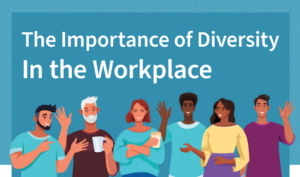
The Undeniable Impact of Workplace Diversity [Infographic]
Workplace diversity is not a new topic. And yet, the world of work hasn’t made nearly enough progress in gender, cultural, and ethnic diversity. The

Workplace diversity is not a new topic. And yet, the world of work hasn’t made nearly enough progress in gender, cultural, and ethnic diversity. The

As the spotlight has brightened on racism. In response to recent miscarriages of justice, the emphasis on identifying racism within other aspects of life has
Workplace diversity is not just a phrase to be bandied about. It goes deeper than what can be seen by internal and external stakeholders. It’s
At this time in our nation’s history it is pretty clear how language and behavior can cause great schisms between groups of people. Divisions that
The conversation about diversity is finally opening up. We have a long way to go, but gender and ethnic equality are firmly on the agenda.
Would it surprise you to learn that highly educated black professionals face a widening gap with whites as they progress through their career? Diversity in